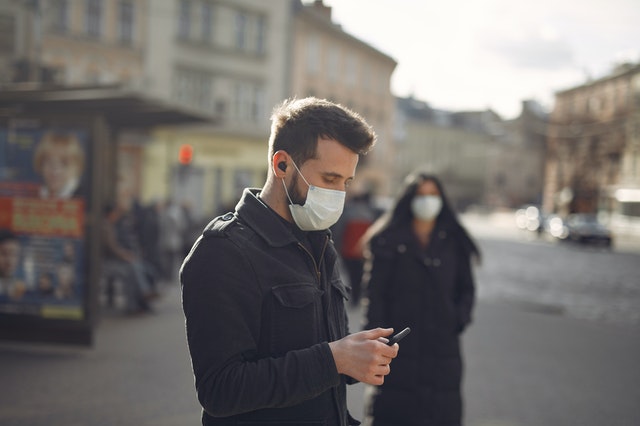The effects of the COVID-19 pandemic on workplaces and the way we work across Australia have been profound. Apart from the impact on jobs and the level of business activity, many of us have become entrenched in a ‘strange’ new world of working from our home offices, kitchen / dining tables or (in the worst case) lounges.
For those of us who have continued to work at worksites you’ll surely have noticed several changes reflecting a focus on continuous cleaning and disinfecting regimes, as well as social distancing measures.
In this article we answer some commonly asked questions in relation to how employers and leaders can position their workplace to best address some of the key work health and safety, COVID-specific challenges that are likely to arise in the coming months ahead.
What can I do to support my employees to return to a safe workplace?
It is also being widely speculated that many workers will wish to continue to work from home when we return to work (KPMG May 2020). Of course, many employees will come back to workplaces, particularly those who are in customer facing roles or who work on remote sites.
For many organisations there remains a need for work to be conducted in workplaces. So there workplaces will be keen to get back into it. As such, over the coming weeks some businesses will see their employees return in some capacity or another.
Many people will be nervous about travelling to and from work on public transport (in spite of social distancing laws) and working in close proximity to colleagues.

So, it will be critical to ensure a systematic approach to controlling the COVID-19 related risk and ensure that infections do not appear or recur.
At a minimum, consider doing the following to achieve this:
- Ensure that a cleaning program is in place which involves daily (or greater, depending on your business) sanitisation of commonly used areas (lift buttons, counters, kitchen benches, foyers etc). For service based workplaces such as retail / food outlets this may include cleaning every few hours or even hourly. This will be especially important if ‘hot desking’ is to continue.
- Ensure that ample supplies of personal cleaning equipment are available to employees. Consult with them in determining what these should be.
- Protect your workers by aligning them in teams so that in the event of an outbreak, reinfection is minimised. Support spreading commuter loads on public transport by (where possible) staggering start and end times for workers.
- Provide signage and direction to ensure that social distancing rules are maintained.
- Consider banning visitors from your workplace. Or, if you must have visitors, provide sanitiser for them (as well as your workers) to use upon entering and exiting your workplace. Screen them to ensure that they are feeling well.
- Mandate all workers who do not feel well must remain at home and encourage them to get tested for COVID-19.
- Be prepared to close the workplace down and send all workers home in the event of a worker in the workplace developing COVID-19.
These and other steps should be implemented in a systematic and planned way and constantly monitored and reviewed to ensure that the overall risk is controlled. On line web based OHS Management platforms such as Safety Champion will make this job easier and allow easier reporting and management of COVID-19 related issues
How can I get my workforce involved in our ‘new normal’?
It is important to involve your workers when making decisions about how to return to work or any other changes you are making to manage COVID. Additionally, continue to involve your workers over time so you can monitor the effectiveness of what you are doing and adjust, as required.
Involving your team in the design of control initiatives, inspecting workplace(s) to ensure that implemented controls are still in place, and encouraging stakeholders to report issues including breaches of the rules, and taking action to resolve these are essential to manage this risk.
What can I do to ensure our employees are mentally ok with returning to work?
It is likely that many of us will all be nervous coming back to workplaces. In addition, those who have remained at work may be nervous about their colleagues returning.

Steps that could be taken to assure nervous employees may include:
- Permitting employees in non-customer facing roles to remain working from home and checking in frequently to determine a future return date.
- Empowering employees to determine their work start times to facilitate travel on less crowded public transport. Blended wok days incorporating home and office based work may also be an option.
- Ensuring that employees, no matter how senior, who breach COVID-19 control rules are appropriately counselled not to do it again. This would include immediately sending employees who present with cold/flu like symptoms.
- Supporting what is being done to control COVID-19 with signage and visible direction. Visible examples of your commitment to managing the COVID-19 risk will be constantly reassuring to your employees.
- Ensuring ongoing communications with your employees to listen to their concerns take action to address them in consultation with their colleagues and review the effectiveness of what is done.
- Employees who are distressed about returning to work may benefit from assistance from a mental health professional via an Employee Assistance Scheme or similar
If one of my workers contracts COVID-19 at our workplace – or worse, there is an outbreak – What are the OHS legal ramifications?
An outbreak of COVD-19 in your workplace will have a dramatic effect on your business – a shutdown and deep clean would be an immediate consequence. From a legislative point of view, you may be liable for not providing a safe workplace for your employees if you do nothing to manage the risk of infection in your workplace.
What about industrial manslaughter law – Does this apply to COVID?
In addition, industrial manslaughter laws (relating to Employers and associated Company Officers) are coming into effect in Victoria in July 2020. Similar laws are already in place in other states around Australia (Queensland, Northern Territory, and the ACT).

If you are a Company Officer, the best way to avoid an Industrial Manslaughter and workplace safety related prosecution will be to ensure that preventative steps are taken to control COVID-19 in your workplace in a systematic way (see above). In any case, an employee testing positive may also eventuate a worker’s compensation claim, which could affect your premium and cost you money.
Read more on industrial manslaughter law and what you need to know here.
What are my responsibilities to my team who continue to work from home?
State and Territory workplace safety laws across Australia are based on the duty of an employer to provide a safe workplace. This duty extends to an employee if they are working from home. Employers have choice as to how extensively they satisfy this duty.
Yet, there is some uncertainty as to where an employer’s duty to safety of their works ends.
Some employers may supply workstation and ergonomic equipment to ensure that the worker is set up in a safe home office. Whilst others may require the employee to manage their own equipment needs and workstation setup.
Yet, the latter approach places the employer at increased risk of breaching their duty as it leaves greater chance of a worker developing an injury due to poor workstation setup.

At a minimum an employer should ensure that a worker has a suitable home workstation, knows how to report a safety issue and to whom, has a home office evacuation procedure in place, has a first aid kit, fire extinguisher/smoke alarm at home and that some form of protection against electrocution from faulty office equipment is in place.
It is a good idea to get all workers working from home to complete a ‘working from home checklist’ specifying these items are in place and also to sign a documented ‘working from home agreement’ so that all parties are clear on when work from home will be taking place.
Also revisit the agreement on an annual basis. All work-from-home employees should redo the checklist before resigning the agreement. Having these basic steps in place will provide comfort that work from home is being managed adequately.
What should I be thinking about to plan ahead?
Some of the challenges that employers may have to face in the not too distant future include – but are not limited to – the following:
- Psychosocial hazards. Where will the dividing line be between a work-based and home-based psychosocial related injury? Employers should be very aware of emerging hazards in this area. Consider a proactive response strategy in which workers are constantly monitored for stress levels and counselled for home-based issues that may impact workplace performance.
- Hours vs Output. Will the focus of work have to change from a time based 8-hour work day to one where outcomes are measured? Will management of workers need to be reviewed in order to avoid the creation of undue stress? While the technology exists to monitor output by keystroke rates etc. will this be the best way to ensure a productive workplace and a happy worker?
- Working Together. How will team-based work be managed with some workers working from home and some from work? How will appropriate distances be upheld? Will there be a risk of screen overload through online meetings and how will this be managed?
- Infection Control. For industries for which infection control is critical (such as Aged Care and Hospitality) how will employee infection control skills be raised quickly and in a cost-effective way? How will the risk of infection be adequately controlled?
Concluding remarks
As OHS professionals we have been excited (not in a weird way) by the challenges presented to us following the COVID-19 pandemic outbreak. For, arguably, the first time a specific workplace safety issue has been in the headlines for more than one day!
We are also impressed with the way that workplaces have responded resulting in rapid and effective control of COVID so far. Workers and managers at all levels of organisations have consulted and worked together to demonstrably minimise the risk.
We need this passion transferred into other safety areas!
Adopting the practice of identifying workplace hazards, assessing risk associated with them, implementing controls to manage the risk, and reviewing effectiveness of these controls, as was shown for COVID, works in making your workplace safer. And this works best if company owners and executives lead!
We at Action OHS Consulting want the passion to continue and want to support you all to ‘do a COVID’ for other safety challenges your workplace faces.
Resources to support a COVID-ready return to work
Contact Action OHS Consulting if you need specific advice in relation to opening up your workplace post COVID-19, or if you need assistance in managing your workforce from home. Alternatively check out the following websites for specific technical advice:
Safe Work Australia COVID-19 information
Environmental cleaning and disinfection principles for COVID-19
Department of Health – COVID-19 infection control training – Although designed for health care workers it may be useful to get workers to undertake, especially if they handle food and serve clients.
Stay up to date on the latest COVID-19 News. Read our blog here.

